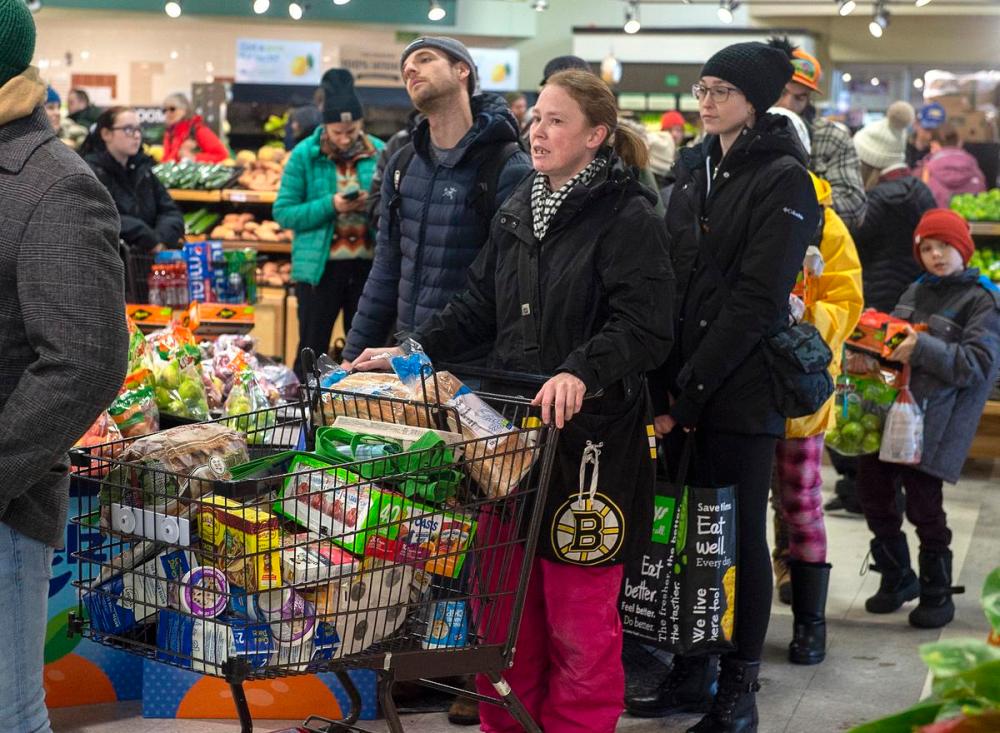Could climbing inflation mean a moment for coupons in Canada?
Advertisement
Read this article for free:
or
Already have an account? Log in here »
To continue reading, please subscribe:
Monthly Digital Subscription
$1 per week for 24 weeks*
- Enjoy unlimited reading on winnipegfreepress.com
- Read the E-Edition, our digital replica newspaper
- Access News Break, our award-winning app
- Play interactive puzzles
*Billed as $4.00 plus GST every four weeks. After 24 weeks, price increases to the regular rate of $19.00 plus GST every four weeks. Offer available to new and qualified returning subscribers only. Cancel any time.
Monthly Digital Subscription
$4.75/week*
- Enjoy unlimited reading on winnipegfreepress.com
- Read the E-Edition, our digital replica newspaper
- Access News Break, our award-winning app
- Play interactive puzzles
*Billed as $19 plus GST every four weeks. Cancel any time.
To continue reading, please subscribe:
Add Free Press access to your Brandon Sun subscription for only an additional
$1 for the first 4 weeks*
*Your next subscription payment will increase by $1.00 and you will be charged $16.99 plus GST for four weeks. After four weeks, your payment will increase to $23.99 plus GST every four weeks.
Read unlimited articles for free today:
or
Already have an account? Log in here »
Hey there, time traveller!
This article was published 22/03/2022 (1314 days ago), so information in it may no longer be current.
Canadians seem to have a love-meh relationship with using coupons for grocery shopping.
As food prices rise precipitously, a new survey from the Agri-Food Analytics Lab at Dalhousie University in Halifax has found, somewhat surprisingly, that even though Canadians like the idea of using coupons to save themselves some cash, in practice, they aren’t really flocking to the idea.
Six months ago, 45 per cent of Canadians had never used coupons before. According to the March 2022 Agri-Food survey, in the face of rising food prices, 15 per cent have changed their mind and begun to use them. And of those who were already using coupons, only 11 per cent have begun to use them more often.

“The couponing culture in Canada is largely underdeveloped,” says Sylvain Charlebois, director of the Agri-Food Analytics Lab. “Essentially that’s what the survey is saying.”
“In (the U.S.), it is actually quite common to see someone leave the grocery store with products they haven’t paid anything for. And in some cases, they actually get credit because the value of coupons exceeds the value of the price of the food product itself.”
Canadians, who have a food inflation rate of 7.4 per cent, as compared to the States’ 8.6 per cent as well, do not fare as well.
The problem, according to Canadian shoppers, are the restrictions — many of which don’t exist in the U.S. — placed on coupons in this country. As a result, 45 per cent of Canadians don’t feel the savings from most grocery-store coupons are worth the effort.
Coupon stacking — using more than one coupon for a product — is extremely rare in Canada. Often coupons can’t be used on items that are already discounted. And many coupons are restricted to certain dates.
“I think people actually see the use of coupons as being problematic,” said Charlebois.
“It seems as if it’s a lot of work for little reward, and you have to really work at it in order to benefit from it.”
The Agri-Food study also found that although volume discounting appears to be popular in Canada, the process raises some ethical red flags among shoppers.
Seventy-three per cent of Canadians try to take advantage of volume discounting — the practice of lowering the unit price of an item if a shopper buys more units. But 54 per cent feel that practice is unfair to smaller households and single people. And 47 per cent feel volume discounts lead to more food waste.
Charlebois said that, with food prices projected to rise even higher over the coming year, the pressure on grocers to provide easy pathways to savings for consumers will only continue to grow.
“I think it’s time for the food industry to start thinking about how to promote its products very differently,” he said.
A total of 1,501 Canadians from across the country were surveyed in March 2022 for the Agri-Food survey, conducted in partnership with Angus Reid. The margin for error on the survey is plus or minus 3.1 percentage points, 19 times out of 20.

